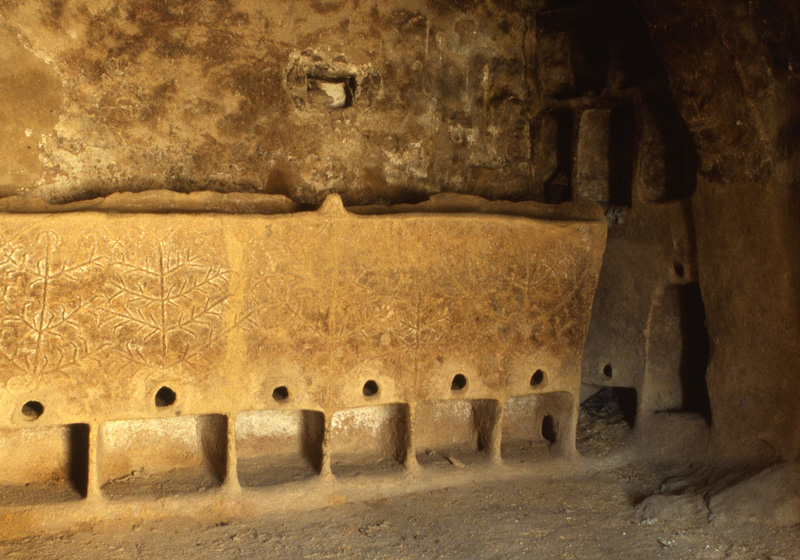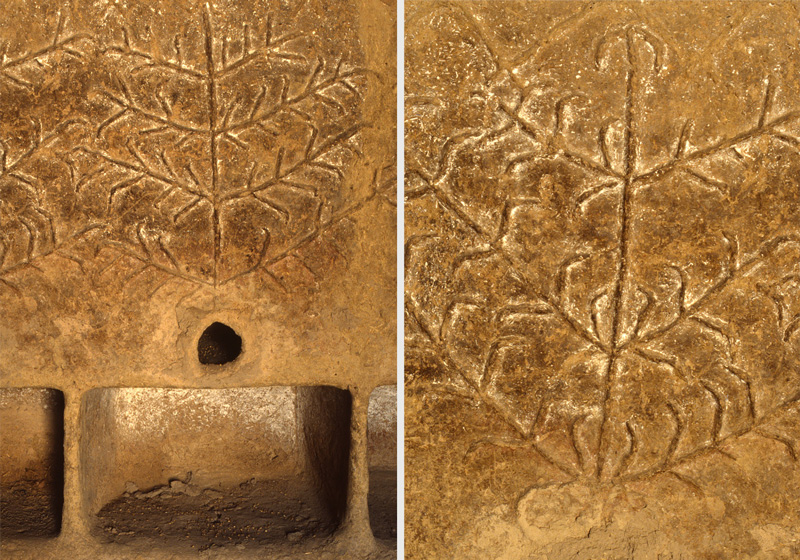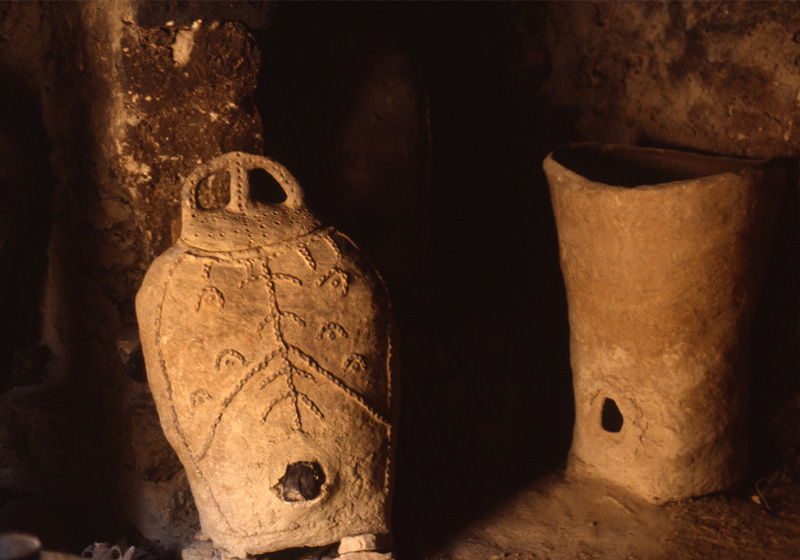Silos of Survival
It was a good harvest. The village has collected about 35 tons of wheat, 5 tons of chickpeas, and 7 tons of lentils. For the animals, the crop supplied plenty of barley, and the leftovers of what was gathered and brought indoor, were picked by the goats nibbling in the fields.
It is now July, and the latest grain on the highest spot was harvested. The animals can still go further for un-grazed land, or nearer to nibble on what they left during the plentiful spring days. A village family of seven has to survive from this harvest to the next one year later, or, if drought hits, two or three years away.
In the years of the late 1800s, early 1900s, remote villages in Jordan had to deal with food security on the family level. As most of settled communities had a mixed economy, depending on agriculture and animal herding, bad years of drought would diminish the yields of both. Cash, if available, would not have been much of help. It would be impractical to transport wheat from markets in the city to the remote village, and in difficult years the urban wheat stock would get very low, pushing the prices beyond the reach of rural people.
One can best understand the traditional village architecture in Jordan by letting the relatively closed economy and the patterns and possibilities of land cultivation, explain the solutions and the root needs. In a harsh environment, on a tableland, away from river or sea, ecology had taught Jordanians how to build their houses and how to use them as "survival kits", as storages, that can provide food between harvests of unpredictable consistency.

Inside the traditional Jordanian village-house, wheat was often given a prominent place. In the villages of Karak and Madaba, wheat and other grains would be stored in silos build out of mud. These silos ("kawayer" in Arabic) were almost always placed at the main wall facing the front -and only- door. Behind the last arch, silos were grouped in one structure of 5 to 8 silos, built a foot away from the back wall to make sure that humidity would not reach. For the same reason they were raised above the ground, elevated on a niche that was opened from the front. This niche was also useful to allow for the placing of a pot under the silo so that grain can flow in. Each compartment would have a big opening for filling the grain from above. At the lower end, a smaller opening, about the size of an apple, would be used to obtain the daily needed grain. After the harvest, when all compartments were filled, the lower outlets would be plastered with mud. After opening the mud cover, later in the year, a ball of cloth would be used to close the silo now in use. To close the upper filling openings, rugs and bedding materials would be neatly folded and placed atop.
Silos of traditional village architecture differ from one region of Jordan to another. One can come up with a typology that divides them according to location. In Northern Jordan, Ajloun villages, silos were rarely decorated and mostly indistinguishable from walls. It is in villages of central Jordan, Ma'in near Madaba and Hmoud near Karak, that silos become centerpieces adorned with decorations that mostly resembled branches.

In Shobak villages (Shammakh, Juhayer, and others) silos were first made outside the house and then brought in like huge jars; some up to 2.5 meters in height. The Shobak silos also have lids of mud giving them a strange appearance. Decoration of Shobak silos would be out of lines from mud, made like a rope and placed on the surface of the silo by repeated finger pressings. Verses from the Koran can also be found written on the silo's front.

These silos are most fragile, their walls are only 3-4 cm of unfired mud fortified only by straw. Nowadays there may be none left to witness the creative response to survival needs; Jordan might have lost them completely, while they are little understood and hardly documented.
Houses in most of the traditional villages in Jordan had some sort of mud silos. Villages of wheat plateaus, around Madaba, Karak and south of Irbid had interiors with silos as main feature. Try the villages of Shobak, if you find any intact interior, it would be one of the last sighting of such objects. Try to meet some of the villagers and ask them to open one of the traditional houses now often used as farm storage. Be patient as you might have to visit more than one village, take some films (100 asa), a tripod, and one of these silver sun shields used in cars, you can place it outside the door to get extra sunlight; traditional houses had little or no windows.